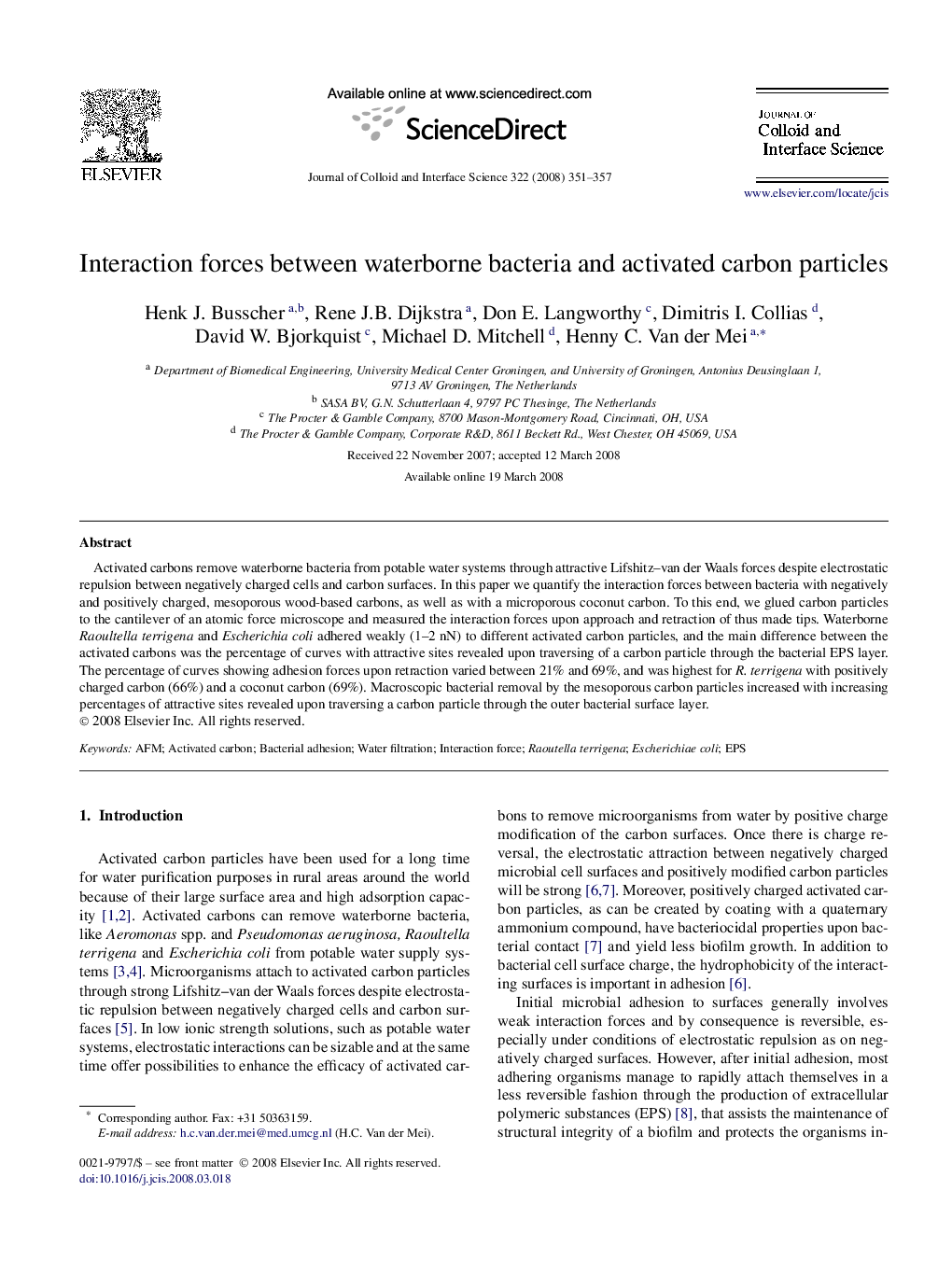| Article ID | Journal | Published Year | Pages | File Type |
|---|---|---|---|---|
| 611995 | Journal of Colloid and Interface Science | 2008 | 7 Pages |
Activated carbons remove waterborne bacteria from potable water systems through attractive Lifshitz–van der Waals forces despite electrostatic repulsion between negatively charged cells and carbon surfaces. In this paper we quantify the interaction forces between bacteria with negatively and positively charged, mesoporous wood-based carbons, as well as with a microporous coconut carbon. To this end, we glued carbon particles to the cantilever of an atomic force microscope and measured the interaction forces upon approach and retraction of thus made tips. Waterborne Raoultella terrigena and Escherichia coli adhered weakly (1–2 nN) to different activated carbon particles, and the main difference between the activated carbons was the percentage of curves with attractive sites revealed upon traversing of a carbon particle through the bacterial EPS layer. The percentage of curves showing adhesion forces upon retraction varied between 21% and 69%, and was highest for R. terrigena with positively charged carbon (66%) and a coconut carbon (69%). Macroscopic bacterial removal by the mesoporous carbon particles increased with increasing percentages of attractive sites revealed upon traversing a carbon particle through the outer bacterial surface layer.
Graphical abstractBy attaching an activated carbon particle to a cantilever, AFM enables direct measurements of the interaction forces between activated carbon particles and immobilized, waterborne bacteria.Figure optionsDownload full-size imageDownload as PowerPoint slide
